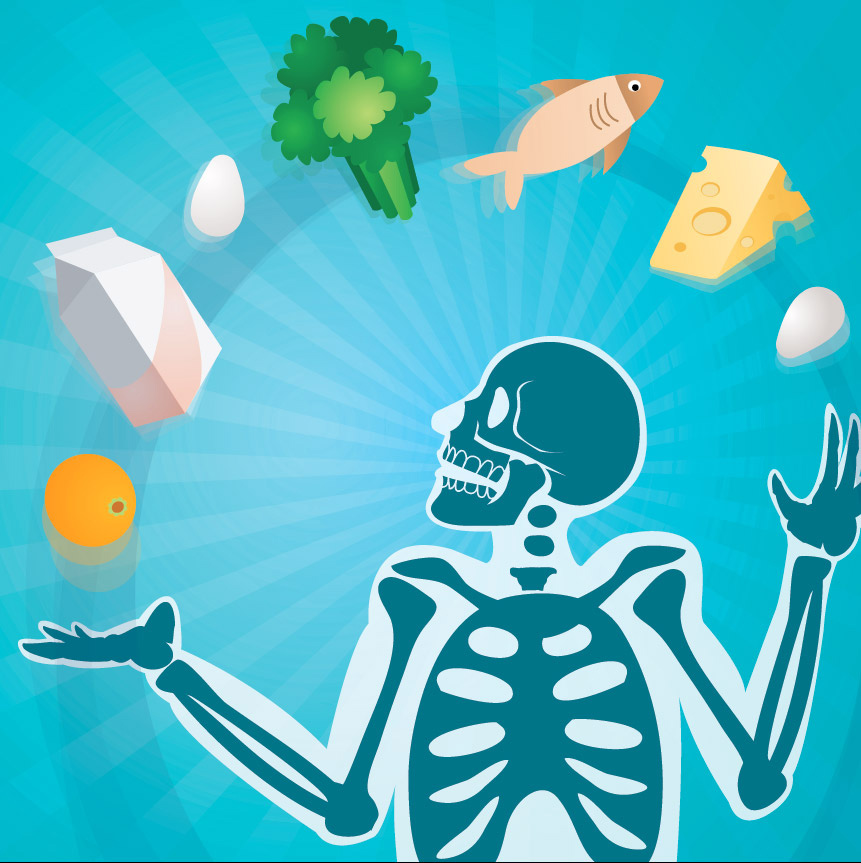Posts Tagged ‘Osteoporosis’
Support Your Bones, Support Yourself. By Our July Student Pharmacist, Kevin Wenceslao.
Our bones are responsible for many functions. They are the framework for our bodies, providing support. They protect our organs, allow us to move, and even produce red and white blood cells which help provide our bodies with oxygen and the ability to fight off infections.
Unfortunately, over time or without proper care, our bones can weaken, which can lead to a disease called osteoporosis. Osteoporosis occurs when the body loses too much bone and becomes frail, which can lead to painful breaks or fractures. Fortunately, there are ways to take care of your bones to prevent this condition and also ways to manage your life if you have weak bones.
Osteoporosis is a common type of bone disease. Our body maintains a balance between breaking down old bone and making new bone. If this balance is disrupted, and we lose too much bone, this leads to osteoporosis. Unfortunately, as we age, our bones sometimes break down more than we can create, which leads to a natural loss of bone as we get older. If we do not take proper steps to maintain our bones, we can become more susceptible to developing osteoporosis.
A bone density test conducted by your doctor can help diagnose osteoporosis and determine how severe it may be. In some cases, the doctor may order specific bone medicine in order to help the bones.
How do you know if you are at risk for osteoporosis? Well, there are two types of risk factors: controllable and uncontrollable. As mentioned above, getting older increases our chances of getting this disease. Other uncontrollable factors include:
- Gender: Women are at higher risk than men due to smaller bones and hormone changes during menopause.
- Ethnicity: White and Asian women are at greater risk than other races.
- Family history: People with family members who also have osteoporosis or a history of fractures can be at risk.
If you fall into those categories above, it is especially important to take extra care to maintain your bones. The risk factors that every person can control are listed below:
- Diet: Low calcium or Vitamin D supplementation from your diet contributes to greater risks.
- Physical activity: Getting too little exercise or having an inactive lifestyle also increases your risk factors.
- Alcohol: Drinking can increase your risk of developing bone disease, as well as falling and breaking your bones.
- Body Weight: Being underweight can lead to frailty.
- Smoking: Cigarettes can cause early menopause and prevent your body from utilizing calcium properly which leads to earlier development of bone disease.
- Medications: Some medications can cause bone loss such as glucocorticoids, cancer treatment medicines, and seizure treatment. It is important to discuss the risk/benefit of your medications with your doctor if you are concerned.
Diet is a key factor in keeping your bones healthy. It is important to have your calcium and Vitamin D levels regularly checked at your doctor’s visits.
Many foods can be good sources of calcium and Vitamin D. Calcium is an important mineral that is necessary for your bones and teeth. Calcium can be found in most dairy products.
Vitamin D is found in small amounts in food, but most of it is provided by getting enough sunlight.
Listed below are the different foods to look for if you need more calcium and Vitamin D in your diet:
If diet is not enough or not an option, your doctor may recommend getting over-the-counter Vitamin D and calcium supplements. At Plain City Druggist, we offer a wide variety of supplements in different strengths to meet your daily needs. These supplements can come in a multiple forms ranging from traditional tablets to chewable gummies and liquids. Ask your pharmacist for more information next time you come visit.
Daily intake of Vitamin D and calcium can vary depending on your age, current health condition, or diet. It is possible to get too much calcium and Vitamin D, so it is important to consult your doctor to determine your individual needs.
The chart shown below represents recommended daily intake and maximum intake for an average person.
By adjusting your daily lifestyle, you can reduce your risks of developing bone disease. Even if you already live with osteoporosis, taking these steps can help prevent it from getting worse and ultimately prevent falls and fractures.
Sharing this information is a great first step in helping yourself and those you care about.
Image 1:
https://www.fitneass.com/optimising-bone-health/bone-health/
References:
Bone Health For Life. (2014, July). National Institute of Arthritis and Musculoskeletal and Skin Diseases. Retrieved July 28, 2017, from https://www.niams.nih.gov/Health_Info/Bone/Bone_Health/bone_health_for_life.asp#2
Learn What Osteoporosis Is and What It’s Caused by. National Osteoporosis
Foundation. Retrieved July 28, 2017, from https://www.nof.org/patients/what-is-osteoporosis/




